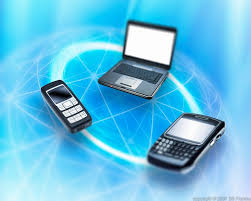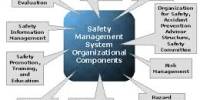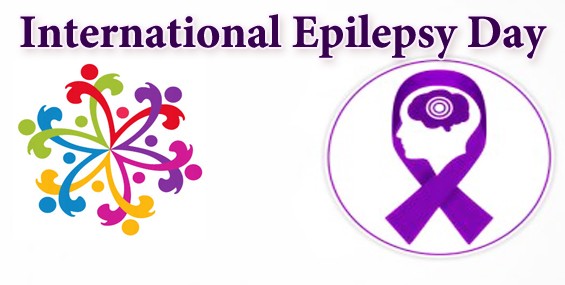Introduction:
One cannot now deny the inevitability of communication for development in the changing global perspective. With the radical change in the perception of development and increased electronic media in the 90s, the role of communication in development has increased tremendously. The term ‘development’ now connotes ‘human development’ or in other words, development of human beings, through creating social and economic opportunities for them and widening human choices to bring changes in their lives. People must be at the center of human development. Development has to be woven around people, not people around the economic development. It has to be the development of the people, by the people, for the people with the role of communication in the economic development of Bangladesh.
Information and communication technology (ICT) is increasingly being recognized as a powerful enabler for economic and social development. ICT can advance economic growth, enhance social inclusion, increase health and education services and improve governance at all levels. The United Nations Millennium Development Goals (MDGs) recognize the potentials of ICT for development and MDG 8 (Target 17) calls “to develop a global partnership for development and, in cooperation with the private sector, make available the benefits of new technologies — especially information and communication technologies.” Despite its potential, ICT is by no means a panacea. ICT can also introduce new ways for fraud and corruption to occur, and its inappropriate application can sometimes derail development outcomes. ICT can also deepen existing inequalities and misdirect scarce resources. When thinking about ICT for development, it is thus crucial to foster an enabling, trustworthy, transparent and non-discriminatory environment that promotes the responsible and effective use of ICT for development for the benefit of all.
Role of Communication in The Economic Development of Bangladesh:
The role of communication plays a vital role in the economic development of Bangladesh. They are given below:
Summary of Findings from 2006 World Bank Report on communication for Development:
• Communication plays a vital role in advancing economic growth and reducing poverty. A survey of firms carried out in 56 developing countries found that firms that use Communication grow faster, invest more, and are more productive and profitable than those that do not.
• Over the past 25 years, developing countries have considerably increased Communication access, especially for telephone services. Between 1980 and 2005, the number of telephone subscribers in developing countries increased by over 30 fold. In 1980, developing countries accounted for only 20 percent of the world’s telephone lines. In 2005, 60 percent of telephone lines globally were in developing countries. This expansion has been driven by the technological revolution of mobile telephony, as well as by increased private sector competition.
• Opening up to private sector competition has led to huge inflows of investment from overseas. Between 1990 and 2003, 122 of 154 developing countries received about USD $200 billion in foreign investment for telecommunications alone.
• While the transition to well-regulated and competitive service provision is important for increasing Communication access, there is some way to go in this transition. For example, nearly half of countries globally retain monopolies on the service provision of Communication.
• While the developing world has seen huge progress in the rollout of basic Communication infrastructure, the picture is more mixed for the advanced use of Communication. Worldwide, Internet use more than quadrupled between 2000 and 2005, but differences in the number of secure Internet servers, a proxy for the availability of e-commerce, remain stark. While developed nations on average reported more than 300 secure Internet servers per 1 million people, developing nations reported less than 2.
• There is a continued need for government and private sector support of initiatives that extend “access” to Communication. The report describes innovative examples of public-private partnerships that can extend access to Communication in rural and remote areas.
• A review of 40 national e-strategies from developing countries found that more than 85 percent of these strategies aim to expand Communication use in governments and schools, expand telecommunications infrastructure, and provide for an adequate legal and regulatory framework.
Transport Communication:
The role of an efficient transport and communication system is extremely critical for the socio- economic progress of a country. As physical infrastructure is indispensable, a well-knit transport and communication network ensures a well balanced distribution system for the means of production, efficient marketing of produced commodities, maintaining stability of price and rapid industrialization. In the current context of globalization and market economy, there is a critical need for evolving a developed and well knit transport and communication system that should be able to integrate Bangladesh with the international transport and communication network. Realizing this importance, the concerned ministries and their agencies continue to exert their concerted efforts to develop the system. In the Revised Annual Development Programer (RADP) of FY 2004-05 there is an allocation of TK. 4543.77 crore for transport and communication sector. In FY 2004-05, the contribution of this sector to the GDP at constant prices is about 10.01 percent (provisional). The transport and communication network in Bangladesh has evolved with roads, railway, and water and air transport as well as post telecommunication and information technology.
Jamuna Multipurpose Bridge Authority (JMBA)
Jamuna Bridge is playing a vital role in road transport system. The Bridge has made the communication between eastern and northern region of the country easier. As a result the producers are getting fair prices of their produces which are encouraging them to produce more. This, in effect, is inducing increased production. Beside, with the establishment of new industries economic activities in the north west zone increased manifold. Therefore there is an increasing trend toll collection. Because of construction of a dual gauge railway across Tangail under Jamuna Rail link project, it was possible to set up a direct railway link between the capital city Dhaka and Rajshahi and Khulna Division. Alongside setting up fail and electricity line gas line has been set up over the bridge.
Other Projects for Construction of Bridge
To provide support to the development of transport infrastructure facilities in Metropolitan Area Dhaka Transport Co-ordination Board (DTCB) was established in 2001 by and Act. Its main objectives are to develop a planned and environment friendly transport system in close cooperation between the public and private sector.
Bangladesh Road Transport Corporation (BRTC)
BRTC has a rich tradition as an entity. To establish a sound transport system BRTC was established in 1961 by an Ordinance. Its main objectives are to:
1. Ensure a cheap, speedy, secured, comfortable and modern transportation
system.
2. Help develop non-government transport system.
3. Play an important role in controlling the transport quality and transport
fare.
4. Development skilled manpower in transport sector thorough training.
5. Play a strategic intervention role for a sound and organized transport
system.
Railway Communication:
Bangladesh Railway is regarded as a cheap and eco-friendly mode of transport. In maritime trade, the Chittagong Sea Port plays a major role. Beside the role or Mongla Sea port and Bangladesh Inland water Transport Authority is also important in transporting passengers and freights. Bangladesh Shipping Corporation is working to provide efficient shipping facilities on international water route. The Department or Shipping performs its regulatory role by enforcing relevant maritime laws and also protects the interest of the crews. Public and private initiative is continuing in the infrastructure development of the land ports established near the border areas or the country. Civil Aviation Authority is responsible for establishment and development of the infrastructure necessary for aircraft operation and at present, it is maintaining 3 international and 5 domestic airports.
Rail transport is a public sector concern. Bangladesh Railway has a total 2,768 route kilometers at the end of the financial year 2000-01 and operates through 452 rail stations nationwide. About ninety percent of the country’s area is accessible by railway.
Growth of Bangladeshi’s Software Sector
The growth of Bangladeshi’s software sector has been striking over the past decade. In 2005–06, Bangladeshi’s software and related services industry, which includes IT enabling services (ITES—including human resources, costumer care, payment services, finance, etc), grew by 28 percent, accounting for 4.8 percent of GDP compared with 0.5 percent in 1996–97. Services and software exports remain the mainstay of the sector with an estimated export growth of over 32 percent for FY07. India is also the global leader in the provision of business process outsourcing, exporting US$25 billion per year worth of these services, a figure that is expected to rise to US$60 billion by 2010.
E-mail:
Electronic mail, popularly known as ‘e-mail’, is the communication of textual messages via electronic means. Electronic mail communication is user to user via the computer. E-mail is delivered to individual electronic mail boxes based in computers. In order to operate an e-mail system, we need a personal computer, a modem & a telephone connection. The world is getting so smaller & smaller with the blessing of science. Now a man from one part of the world can communicate with a person of another part of the world within a second. E-mail has made this process easier. E-mail, communication in the latest invention in the communication system. It helps all classes of people.
An important advantage of e-mail is its ability to reduce the consumption of paper in the office. Internal memos & reports can be exchanged electronically without using paper. Being a computer based messaging system; files prepared on computers can be instantly copied & easily exchanged as e-mail. This facility has the potential of improving office efficiency considerably.
Being a person to person communication, e-mail turns out to be a cheaper alternative to telephone conversation 7 eliminates the time spent in establishing phone calls. For a telephone conversation to materialize both the caller & the called must be present simultaneously. Some studies indicate that as much as 70 percent of the business phone calls during business hours do not succeed in the first attempt due to unavailability of the party being called. E-mail permits communication between two parties without the parties actually being present simultaneously. Privacy is ensured as the mail is delivered to an individual’s mail box which can be accessed or opened only by the intended recipient.
E-mail has brought about a revolution in modern communication. Messages can be transmitted from one country to another within seconds. It is far cheaper than telephone calls. Trade & commerce has become greatly dependent on this speedy mode of communication. It has, however, not reached every one, especially in developing countries like ours, as most people can not afford to have a personal computer. But even here people have started using commercially operated e-mail facilities for important purposes.
Fax:
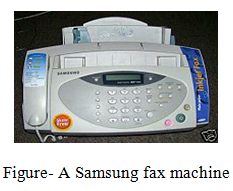
Fax (short for facsimile, from Latin fac simile, “make similar”, i.e. “make a copy”) is a telecommunications technology used to transfer copies (facsimiles) of documents, especially using affordable devices operating over the telephone network. The word telefax, short for telefacsimile, for “make a copy at a distance”, is also used as a synonym. Although fax is not an acronym, it is often erroneously written as such (“FAX”). The device is also known as a telecopier in certain industries. When sending documents to people at large distances, faxes have a distinct advantage over postal mail in that the delivery is nearly instantaneous, yet its disadvantages in quality have relegated it to a position beneath email as the prevailing form of electronic document transferral.
Capabilities:
There are several different indicators of fax capabilities: Group, class, data transmission rate, and conformance with ITU-T (formerly CCITT) recommendations.Fax machines utilize standard PSTN lines and telephone numbers.
Group:
(a)Analog:
Group 1 and 2 faxes were sent in the same manner as a frame of analog television, with each scanned line transmitted as a continuous analog signal. Horizontal resolution depended upon the quality of the scanner, transmission line, and the printer. Analog fax machines are obsolete and no longer manufactured. ITU-T Recommendations T.2 and T.3 were withdrawn as obsolete in July 1996.
- Group 1 faxes conform to the ITU-T Recommendation T.2. Group 1 faxes take six minutes to transmit a single page, with a vertical resolution of 98 scan lines per inch. Group 1 fax machines are obsolete and no longer manufactured.
- Group 2 faxes conform to the ITU-T Recommendations T.30 and T.3. Group 2 faxes take three minutes to transmit a single page, with a vertical resolution of 100 scan lines per inch. Group 2 fax machines are almost obsolete, and are no longer manufactured. Group 2 fax machines can interoperate with Group 3 fax machines.
(b)Digital:
Group 3 and 4 faxes are digital formats, and take advantage of digital compression methods to greatly reduce transmission times.
- Group 3 faxes conform to the ITU-T Recommendations T.30 and T.4. Group 3 faxes take between six and fifteen seconds to transmit a single page (not including the initial time for the fax machines to handshake and synchronize). The horizontal and vertical resolutions are allowed by the T.4 standard to vary among a set of fixed resolutions:
- Horizontal: 100 scan lines per inch
- Vertical: 100 scan lines per inch
- Horizontal: 200 or 204 scan lines per inch
- Vertical: 100 or 98 scan lines per inch (‘Standard’)
- Vertical: 200 or 196 scan lines per inch (‘Fine’)
- Vertical: 400 or 391 (note not 392) scan lines per inch (‘Superfine’)
- Horizontal: 300 scan lines per inch
- Vertical: 300 scan lines per inch
- Horizontal: 100 scan lines per inch
Class:
Computer modems are often designated by a particular fax class, which indicates how much processing is offloaded from the computer’s CPU to the fax modem.
- Class 1 fax devices do fax data transfer where the T.4/T.6 data compression and T.30 session management are performed by software on a controlling computer. This is described in ITU-T recommendation T.31.
- Class 2 fax devices perform T.30 session management themselves, but the T.4/T.6 data compression is performed by software on a controlling computer. The relevant ITU-T recommendation is T.32.
Data transmission rate:
Several different telephone line modulation techniques are used by fax machines. They are negotiated during the fax-modem handshake, and the fax devices will use the highest data rate that both fax devices support, usually a minimum of 14.4 kbit/s for Group 3 fax.
ITU Standard | Released Date | Data Rates (bit/s) | Modulation Method |
V.27 | 1988 | 4800, 2400 | PSK |
V.29 | 1988 | 9600, 7200, 4800 | QAM |
V.17 | 1991 | 14400, 12000, 9600, 7200 | TCM |
V.34 | 1994 | 28800 | QAM |
V.34bis | 1998 | 33600 | QAM |
Note that ‘Super Group 3’ faxes use V.34bis modulation that allows a data rate of up to 33.6 kbit/s.
Fax paper:
As a security precaution, thermal fax paper is typically not admissible as evidence in a court of law unless photocopied. This is because the ink used on fax papers are delible, brittle and tend to come off over long periods of storage.
Document exchange through facsimile systems is emerging as a major application of telecommunication due to its speed of transmission. A telephone connection is necessary for operating it. The fax machine is capable of transmitting & receiving printed matter, which may include graphics, drawing, pictures, hand written texts etc. This it highly suitable for business & official purposes which deal mostly with paper documents.
There are two types of Fax systems- the photographic & the document. In the photographic fax, black & white as well as gray level information is transmitted & printed. Typically there are 8 16 levels that can be recognized by the system. The document system handles only black & white levels. Generally the document facsimile is more popular than photographic system.
Fiber-Optic communications:
Abstract – This paper presents a technical overview of some of the underlying principles of the modern telecommunication technology and the evolution of microwave radio, satellite systems and various optical fiber based infrastructures. Based on the proven superiority of fiber optics combined with the shortfalls of and the complexities faced by the existing satellite systems due to particularly unfavorable regional climatic conditions in and around Bangladesh, the need to link that country to a global submarine optical fiber telecommunication system as the backbone of choice for bulk information transport is underscored.
Satellite & Microwave Technology:
Since the introduction of modulated microwaves in the 1920’s for communication between two distant points, this technology has gone through a tremendous amount of development. However, these links were limited to distances within the ‘line of sight’ (roughly 30 kilometers). Thus, the need for orbiting satellites to relay information over long distances was realized; pilot concepts evolved in the early 1950’s and were followed by the successful deployment of communication satellites a decade later. Today satellites of all shapes and capabilities have been launched to serve almost all the countries of the World. Most communication satellites are in geo-stationary orbits (some 35,800 km above the Earth’s surface) and are able to ‘see’ nearly one half of the Earth from this vantage point. To provide continuous coverage to any point on Earth, only three satellites in such an orbit are sufficient [1]. However, signals are weakened about a hundred times after traveling these large link distances, thus necessitating the usage of high gain antennas and powerful transmitters. A more pertinent problem, however, is the delay and echo often experienced in long distance phone calls that use these satellites.
Optical Fiber Technology:
Faced with the aforementioned fundamental shortfalls of a satellite-based system, real interest in optical communication was aroused with the invention of the laser in early 1960’s. Proposals for using optical fibers to avoid degradation of the optical signal while propagating through the atmosphere were made almost simultaneously in 1966 [2]. Early systems exhibited high attenuation (1000 dB/km). Today, less than 40 years on, attenuation of less than 0.2 dB/km is easily achieved for a carrier wavelength of 1.55m as shown in Figure 2. Figure 2: Loss characteristics of a silica optical fiber showing the three wavelengths of interest. Thus the majority of the transmission and receiver systems are geared for operation at this wavelength.
A. Sub-marine Optical Fiber Based Long Haul Backbones
B. Optical Metro Area Networks
C. Fiber Optic Cables Installed on Overhead Power Transmission Lines
Status Of Telecommunication Network Infrastructures In Bangladesh:
A. Satellite/Microwave Network
B. Optical Fiber Network
C. VSATs Users
D. Cellular Phone Networks
Economic Benefits Of A Better Communication System:
The advantages and benefits that telecommunication can bring in education, commercial, medical and governmental activities are too numerous to mention, suffice it to say that its expansion plays an important role in the economic and social development of a country. One important benefit of a penetrative telecom infrastructure is that it can enhance instant communication between Bangladeshis on the one hand and people in distant places around the globe on the other. In other words, increasing the number of phone lines per inhabitant, teledensity, can help put Bangladesh on the world map through enhanced domestic and global trade. This will pave the way for a stronger economy.
Currently, Bangladesh is among the countries with the lowest teledensity. Improving the telecom infrastructure will reduce the cost of local and international phone calls to and from Bangladesh enabling Bangladeshis to join the international community. Communication technology also serves as a “Market maker”. Given the often intense economic competition among nations, missed opportunities due to lack of communications access will have more dire consequences in the future .
Unlike some of its predecessors, fiber optics technology has many unrivaled advantages, some of which are listed below:
1. Enormous potential bandwidth: The optical carrier frequency in the range 1013 to 1014Hz offers the potential for a fiber information carrying capacity that is many orders of magnitude in excess of that obtained using copper cable or wideband radio systems. This enables fibers to simultaneously carry voice, data, image and video signals.
2. Small size and weight: an optical fiber is often no wider than the diameter of a human hair; thus even after applying protective layers, they are far smaller and much lighter than
corresponding copper cables. This is a tremendous boon to alleviating duct congestion in cities.
3. Immunity to interference and cross talk: they form a dielectric and are therefore free from electromagnetic interference.
4. Signal security: as light from a fiber does not radiate significantly, a transmitted optical signal cannot be obtained non-invasively, thus ensuring a high degree of signal security.
Internet:
Internet is the largest discovery of science & the greatest advancement in the field of communication. It is the computerized process with telephone set. To get internet connection, it requires a modern telephone line & a different sort of software for using the network system. Like telephone number internet is maintained by its own number. There are two types of internet. They are on-line internet & off-line internet. Internet usually gets connection from three networking systems. They are LAN (Local Area Network). MAN (Metropoliton Area Network) & WAN (World Wide Area Network). Now- a- days an internet is of great, use to us. It has made the world smaller & brought the world within our reach. We can get information on every matter within a very short time. It has widened our knowledge & made us thirstier for the unknown. It is a miracle. It works like Aladin’s magic Lamp.
Internet is a computerized network of information. The activities of the internet are very smooth, easy & rapid. A man can dial a number from his computer & a link to the internet will soon give him a connection in & outside the country according to his expectation.
The first connectivity of internet was only in 1996. Though It was somewhat late, over the past few years the growth is rapid. The government’s high internet tariff is impeding the growth of this sector. Recently the government is decided to reduce the tariff 50%.[3]
Internet country code: .bd
Internet Service Providers (ISPs): As of 2005 more than 180 Internet Service Providers are operating in the country.ISP’s are regulated by the Bangladesh telecommunication regulatory commission (BTRC).
Internet users: The number of internet users in Bangladesh is now 450,000(2007) compared to 100,000 in 2000.
(a)Broadband Internet Access:
Though broadband internet access is available it charges high for high speed connection than other south asian countries.Broadband internet and e-commerce in Bangladesh is slowly progressing.WiMAX service is now available from some internet service providers.
(b)Submarine cables:
SEA-ME-WE 4 or South-East Asia – Middle East – Western Europe 4 . The landing site is Cox’s Bazar, Bangladesh.
Radio:
Characteristics of Radio:
Bangladesh Betar:
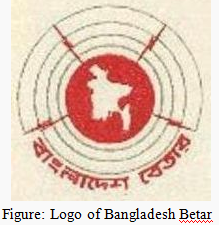
Bangladesh Betar (Bengali: বাংলাদেশ বেতার) is the state-owned radio broadcasting organisation of Bangladesh. It was also known as Radio Bangladesh between 1975 and 1996.
Radio transmission in the region now forming Bangladesh started in Dhaka on December 16, 1939. Initially, the station was located in old Dhaka. Later, the station was relocated to Shahbag. It played an important role during the Bangladesh Liberation War of 1971. On March 26, 1971, the broadcasting center of Radio Pakistan was used to transmit a declaration of independence, which was picked up by a Japanese ship in the Chittagong Harbor and retransmitted. During the war, it was known as Shwadhin Bangla Betar Kendro (Independent Bengal Radio Station). Due to heavy shelling, the station had to be relocated several times, and ultimately moved to Calcutta on May 25, from where it would broadcast until the end of the war. On December 6, it was renamed Bangladesh Betar.
Radio broadcast stations: AM 12, FM 12, shortwave 2 (1999)
Radios: 6.15 million (1997)
The government owned Betar-Radio Bangladesh operates from Dhaka and other local districts. Currently, the private FM radio channels are very popular. They are trying to attract young people by broadcasting music and news. The operating private radio channels include:
National
Bangladesh Betar
FM Stations
ABC (Coming Soon)
Capital FM (Dhaka)
Radio Amar (Uniwave) FM 101
Radio Foorti FM 88.0
Radio Today FM 89.6
Radio Metrowave
They have limited coverage. They are broadcasting in Dhaka and its surrounding areas.
Radio is an important entertainment source for the general people. We can get great pleasure by hearing radio. Specially, now-a-days we are habituated to hear FM radio. Most of the programs are much more standard.
We can get latest news from radio. We also get information about market price, traffic Jam information, latest songs information, latest movies information, celebrity information, food raspy, funny jokes, love story of an individual person, new product information, political information, business information etc from radio channels.Sometimes radio channels provide programs live telecast. That time general people can send their SMS to express their opinion or what they think. They also send questions for the celebrity to know about them
Satellite Channels:
The channels that go air world-wide & are telecast with the help of satellite are satellite channels. Dish antenna is large sized & dish shaped. It is much improved & more powerful version of the earlier antennas. Dish antenna has brought about a revolutionary change in the world of showbiz. It can provide thousand connections simultaneously. Through dish antenna now one can watch any program of any channel on T.V. Earlier, the views could watch only domestic T.V. programs. Sometimes, it was boring & dull. But the viewers had no way out of this.
Now dish antenna has offered the viewers thousand options. One can watch sports, movies, news & many other entertainment programs whenever he likes. Dish antenna has world closer than it was before.
There are many advantages of satellite channels. We can learn many types, of educational things. We can also know about co curriculum works. It also increases our creativity & brave. We can watch adventurous things by the satellite.
We can use new types of channels through satellite channels. Our creativity will be improved by satellite channels. Then our brave will be increased by satellite channels.
Telecommunication:
Bangladesh Telephone Board
Jump to: navigation, search
Bangladesh Telephone Board | |
Type | State Owned |
Founded | 1979 |
Headquarters | 37/E, Eskaton Garden, Telegogajog Bhaban, Dhaka, Bangladesh |
Industry | Telecommunications |
Products | Telephone, Mobile Telephony, Fixed Lines, Internet |
Website | http://www.bttb.net |
The Bangladesh Telephone (T&T) Department was created under the Ministry of Posts & Telecommunications after the independence of Bangladesh in 1971 to run the telecommunication services on a commercial basis. In 1976, Bangladesh T&T Department was converted into a corporate body.
In pursuance of an ordinance promulgated by the president on 24 February 1979, the department was restructured into Bangladesh Telephone and Telegraph Board (BTTB) with a mandate to provide basic telecommunication services throughout the country.
Today ‘BTTB’ provides land-line telephone services in the urban areas, domestic long-distance and international services. Though the Bangladeshi government has given out nationwide PSTN licences the lucrative Dhaka market (which account for majority of the nationwide market) is still under the monopoly of BTTB.
In 2004, BTTB forayed in to the mobile telephony market of Bangladesh by launching a subsidiary company called Teletalk.
BTTB provides dial-up Internet access in all 64 districts of the country, making it the most-accessible Internet service provider in the country.As of June 2008 its total dial-up subscriber is 28659. It also handles the .bd domain.
As of March 2008 total subscriber of BTTB was 872.409 thousand.
Telecom System in Bangladesh:
Jump to: navigation, search
The Bangladesh telecommunications system contains several subsystems. A general assessment of the telephone system is that it is totally inadequate for a modern country.[citation needed]The domestic system is undergoing modernization. Digital systems; trunk systems including VHF and UHF microwave radio relay links, and some fiber-optic cable are being introduced in the cities. The international system consists of two Intelsat satellites in geostationary orbit, international radiotelephone communications and landline services to neighboring countries.
Code System: The telecom sector in Bangladesh is rapidly emerging.
The area code has 1-4 digits.
The Subscriber Number has 3-7 digits.
The Trunk Prefix is “0”.
The international prefix is “00”.
The International code is “0088” or, “+88” (Bangladesh).
Calling Code: +880 – Sub Codes
(a) PSTN: The PSTN operators in Bangladesh are:
(i)BTTB
(ii)Ranks Telecom Ltd.
(iii)Tele Barta Ltd. – branded under the name Jubok phone.
(iv)Jalalabad Telecom Ltd. – branded under the name Bijoy Phone.
(v)Onetel Communication Ltd.
(vi)National Telecom Ltd.
(vii)Peoples Telecom Ltd.
(viii)Westec Ltd.
(ix)Dhaka Telephone Co. Ltd.
(x)Sheba Phone Ltd. (ISL)
(xi)S.A Telecom System Ltd.
(xii)Banglaphone
The number of PSTN subscribers in Bangladesh as of March 2008 was 1.168 million[1
(b) Mobile Phone:
There are 6 mobile phone operators in Bangladesh. These are:
1.Grameenphone Ltd.(GP)
2.TMIB(Aktel)
3.Sheba Telecom Ltd.(Banglalink)
4.PBTL(Citycell)
5.Teletalk Bangladesh Ltd.(Teletalk)
6.Warid Telecom Int.(Warid Telecom (Bangladesh))
The number of mobile phone subscribers in Bangladesh as of March 2008 was 38.93 million.[2]
(c) Long Distance Operator (as per ILDTS Policy 2007):
6 licneses were issued by BTRC in 3 categories (IGW, ICX & IIG) through an open auction in February 2008. The incumbant BTTB got the same licenses too. Here is the list of all operators:
(i) International Gateway (IGW) Operators:
1. Banglatrack Limited
2. Mir Telecom Limited
3. Novotel Limited
(ii) Interconnection Exchange (ICX) operators:
1. Getco Telcom
2. M&H
(iii)International Internet Gateway (IIG) Operator
1. Mango Teleservices Limited
Jump to: navigation, search
We can express our all the opinion through telecommunication. That’s why most of the telecommunication company has reduced their mobile service cost. We can call to others, chat with others, send massages, browse, use internet, picture messages etc. It is very cheap.
Television:
The word “Television” is derived from the Greek word “Tele” which means distance & the Latin word “Visio” which means vision. It is one of the most wonderful inventions of modern science. The idea of television first came to Paul Nipkow, a German scientist. Later it was invented by Bayard, a British scientist in 1925. After the Second World War it has become very popular all over the world. It is an audio- visual instrument & the most powerful medium for mass education, recreation & advertisement.
| Official Country Name: | People’s Republic of Bangladesh |
| Region (Map name): | East & South Asia |
| Population: | 131,269,860 |
| Language(s): | Bangla (official known as Bengali), English |
| Literacy rate: | 56.0% |
| Area: | 144,000 sq km |
| GDP: | 47,106 (US$ millions) |
| Circulation per 1,000: | 254 |
| Number of Television Stations: | 15 |
| Number of Television Sets: | 770,000 |
| Television Sets per 1,000: | 5.9 |
| Number of Radio Stations: | 26 |
| Number of Radio Receivers: | 6,150,000 |
| Radio Receivers per 1,000: | 46.9 |
| Number of Individuals with Computers: | 200,000 |
| Computers per 1,000: | 1.5 |
| Number of Individuals with Internet Access: | 100,000 |
| Internet Access per 1,000: | 0.8 |
Bangladesh has the dubious distinction of being the most densely populated country in the world and one of the poorest. Roughly 85 percent of its population lives in villages, where there is a frequent possibility of natural disasters such as floods, severe storms or tidal waves. Around two-thirds of the people live on agriculture and there is little industry. Illiteracy is at an unacceptable high; only 38.1 percent of the population, age 15 or older, can read and write. Of these, the ratio of males to females is 2:1. The per capita income is $380, which may not take account of lots of economic transactions in the countryside because they are barter transactions or do not enter the government statistics.
Censorship:
All publications are subject to Press and Publication Act of 1973, which requires four copies of each issue to be sent to a “designated government agency.” While the government categorically denies the existence of censorship, in practice, papers are “guided” by the advice and briefings of the Principal Information Officer of the Ministry of Information and Broadcasting as well as by the External Publicity Division of the Ministry of External Affairs. The President’s Council of Advisors controls the newspaper editors informally. In general, criticism of economic policies is more likely to be tolerated than sensitive political issues.
List Of Television Stations:
The first television signal broadcast in Bangladesh was in 1964 by the state-owned television network BTV. From then onwards BTV had a virtual monopoly until the late 1990’s. Ever since then a number of stations had arrived. Many have also shut down in the process.
Terrestrial networks
| Name | Ownership | Language(s) | Established |
1 | Bangladesh Television (BTV) | State-owned | Bengali | December 25th, 1964 |
Satellite networks:Almost every channel is broadcast from the Telstar 10 satellite with the exception of ATN Bangla which is broadcast from Thaicom2/5
| Name | Ownership | Language(s) | Genre | Established |
1 | ATN Bangla | Private | Bengali | Entertainment | 2001 |
2 | Banglavision | Private | Bengali | Entertainment | 2005 |
3 | BTV World | State Owned | Bengali | Entertainment | 2005 |
4 | Channel I | Private | Bengali | Entertainment | 1998 |
5 | Channel One | Private | Bengali | Entertainment | 2006 |
6 | CSB News(defunct) | Private | Bengali | News/Current Affairs | 2007 |
7 | Desh TV | Private | Bengali | Entertainment | Test Transmission |
8 | Diganta Television | Private | Bengali | Entertainment | 2007 |
9 | Ekushey Television | Private | Bengali | Entertainment | April 14th 2000 |
10 | Islamic TV | Private | Bengali | Religious | 2007 |
11 | nTV | Private | Bengali | Entertainment | 2003 |
12 | Rtv | Private | Bengali | Entertainment | 2005 |
13 | Boishaki | Private | Bengali | Entertainment | 2006 |
14 | Falgun Music | Private | Bengali | Music | 2007 |
The number of private satellite channels is growing. The first private channel in Bangladesh was ATN Bangla
List Of Bangladeshi Television Channel: Recent years have seen an upsurge in Bangladeshi television channels, especially during the BNP-led four party alliances. Below is a list of channels up linked from Bangladesh.
State Owned
Bangladesh Television – Bangladesh’s only terrestrial tv channel. The satellite version is BTV World.
General Entertainment
ATN Bangla
Banglavision
Ruashi Bangla Television(Bangladesh)
Channel I
Channel 1
Desh TV
Diganto Media Corporation (DTV)
Ekushey ETV
NTV Bangladesh
RTV
TV News
CSB News
Religious
Islamic TV
Television is a big media of entertainment. Any person can learn learning thing to watch television. We can pass our leisure time by watching television. Drama, songs, films, cultural programs, debating programs, Islamic programs can teach us how to drive our life.
Telex:
Telex communication is also electronic in nature. Telex communication is terminal to terminal. In telex, messages designed to a number of users are sent to the same terminal from where it is distributed in a printed from by an operator.
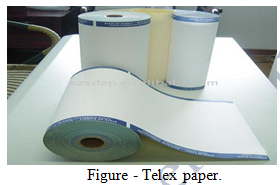
1) 2-ply and 3-ply
2) Size: different sizes available
3) Carbonless paper roll
4) Instant and clear copy image, which presents excellent optical density and light
resistance;
5) Good dimensional stability and curl control for converting;
6) High surface strength, can not smear or rub off onto hands or clothes.
Many companies have been providing Telex services to its international customers. As the use of telex services declines around the world this companies remain committed to its long term provision. Save costs with no need for server software, desk top licenses, modems, hardware, telex lines or expensive maintenance contracts. This companies also provides internet Telex solutions. They are given below:
Wireless Communication:
Wireless Connectivity:
Wireless – Term describing communication that requires no wire between two communicating points.
Connectivity – The ability to connect communications systems to exchange data or share resources.
Wireless Connectivity – Wireless connectivity involves all the new wireless devices and technology. It brings in all the new ways of collaboration, mobile, so that now we can manipulate, share and shape our digital content from anywhere, with anyone totally mobility.
Wireless can be divided into some groups such as:
* Fixed wireless — the operation of wireless devices or systems in homes and offices, and in particular, equipment connected to the Internet via specialized modems
* Mobile wireless — the use of wireless devices or systems aboard motorized, moving vehicles; examples include the automotive cell phone and PCS (personal communications services)
* Portable wireless — the operation of autonomous, battery-powered wireless devices or systems outside the office, home, or vehicle; examples include handheld cell phones and PCS units
* IR wireless — the use of devices that convey data via IR (infrared) radiation; employed in certain limited-range communications and control systems
Wireless LAN:

A wireless LAN or WLAN is a wireless local area network, which is the linking of two or more computers without using wires. WLAN utilizes spread-spectrum technology based on radio waves to enable communication between devices in a limited area, also known as the basic service set. This gives users the mobility to move around within a broad coverage area and still be connected to the network.
Wireless Network Types
When we look at Wi-Fi specifically, which is what most of the jobs out there pertain to today, and the newest and hottest technology, there are 4 major types of wireless choices.
1999 – 802.11b
As of right now, 802.11b costs the least, and is the type that is most common on college campuses, homes and businesses. Has a range of about 150 feet, and transfers at 11 Mbps @ 2.4 GHz. 32 users per access point. (LOTS OF AP’s for COLLEGES). AP: $55-160 Card: $30-90
2001 – 802.11a
Not compatible with 802.11b, range of 75 feet. 64 users per access point. Not widely used. Most used in large corporation, where many users can access a AP in a small area. AP $100-130 card $100
2003 – 802.11g
Backwards compatible with 802.11b, 64 users per ‘g’ access point. G AP’s have a range of 150 feet. ‘G’ spots are not very popular since the technology is new, but the g card can be used at 802.11b spots. Big Benefit. AP: $130-200 Card: $80-130
2003 – 802.11a/g
a/g spots have the largest load of 128 users per AP. The a/g card is backwards compatible with b, a, and g since it houses all the technologies in one card. a/g spots are rare, but the card is backwards compatible with every Wi-Fi technology. Most expensive technology, but well worth it. AP: $300 Card: $100
Bluetooth:

Bluetooth is a radio standard and communications protocol primarily designed for low power consumption, with a short range (power class dependent: 1 meter, 10 meters, 100 metres) based around low-cost transceiver microchips in each device. Bluetooth lets these devices communicate with each other when they are in range. The devices use a radio communications system, so they do not have to be in line of
sight of each other, and can even be in other rooms, so long as the received transmission is powerful enough.
Class | Maximum Permitted Power (mW) | Maximum Permitted Power (dBm) | Range (approximate) |
Class 1 | 100 mW | 20 dBm | ~100 meters |
Class 2 | 2.5 mW | 4 dBm | ~10 meters |
Class 3 | 1 mW | 0 dBm | ~1 meter |
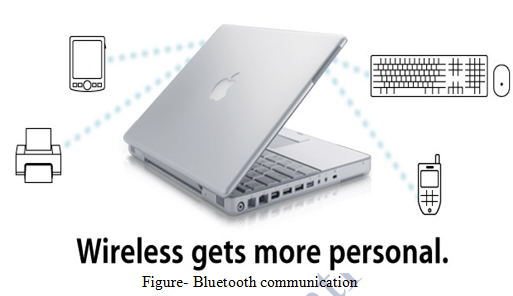
Bluetooth is in a variety of new products such as phones, printers, modems, and headsets. Bluetooth is acceptable for situations when two or more devices are in close proximity with each other and don’t require high bandwidth. Bluetooth is most commonly used with phones and hand-held computing devices, either using a Bluetooth handset or transferring files from phones/PDAs to computers. Since Bluetooth uses short-range radio frequencies, it is not as effective for setting up networks that can be accessed from remote locations as Wi-Fi is.
Cell Phones: 
A mobile or cellular telephone is a long-range, portable electronic device for personal telecommunications over long distances.
Mobile phones and the network they operate under vary significantly from provider to provider, and nation to nation. However, all of them communicate through electromagnetic radio waves with a cell site base station, the antennas of which are usually mounted on a tower, pole, or building.
The phones have a low-power transceiver that transmits voice and data to the nearest cell sites, usually 5 to 8 miles (approximately 8 to 13 kilometres) away. When the cellular phone or data device is turned on, it registers with the mobile telephone exchange, or switch, with its unique identifiers, and will then be alerted by the mobile switch when there is an incoming telephone call. The handset constantly listens for the strongest signal being received from the surrounding base stations. As the user moves around the network, the mobile device will “handoff” to various cell sites during calls, or while waiting (idle) between calls it will reselect cell sites.
Cell sites have relatively low-power (often only one or two watts) radio transmitters which broadcast their presence and relay communications between the mobile handsets and the switch.

Experience of GrameenPhone in Bangladesh
Since it first launched its services in Bangladesh in 1997, GrameenPhone has contributed to the country’s social and economic development by fostering mobile penetration. Through its low pricing strategy, the company was able to increase competition, quickly bring down prices in the telecommunication sector and help increase mobile penetration from 0.3 percent in 1997 to over six percent in 2004. Besides connecting previously remote and unconnected areas, the company’s Village Phone (VP) Program has allowed mainly low income women in rural areas to borrow enough money to buy a handset, a subscription and cover incidental expenses so as to start their own pay telephone service. The idea of the VP Program, which is implemented by Grameen Telecom (GTC) in cooperation with Grameen Bank, a micro credit lending institution is simple: Once the women have received training about the technical operations and tariffs, they are set to start up their own business. The average earning of a Village Phone Operator is about BDT* 5000 per month, which is more than twice the country’s per capita income. GrameenPhone has also had a major macroeconomic impact and created new employment opportunities. In addition to employing over 1,000 people, the company has created more than 100,000 jobs, including for dealers, agents, contractors, suppliers, and Village Phone operators. GrameenPhone is also one of Bangladesh’s largest private sector investors, as well as one of largest taxpayers in the country. By 2004, its contribution to the government represented 0.4 percent of the country’s entire GDP.
* BDT refers to Bangladesh’s currency (taka)
Source: International Telecommunications Union (2006).
VOIP

Voice over Internet Protocol, also called VOIP, IP Telephony, Internet telephony, Broadband Telephony, Broadband phone & voice over broadband is the routing of voice conversations over the Internet or through any other IP-Based Network.
Skype users essentially make telephone calls and video calls through their computer using Skype software and the internet. The basis of the system is free communication between users of Skype software; however the product also allows Skype users to communicate with users of regular landline and mobile telephones. This software is currently available free of charge and can be downloaded from the company website, but the software is proprietary and the Skype protocol is unpublished.
The main difference between Skype and other VoIP clients is that Skype operates on a peer-to-peer model, rather than the more traditional server-client model. The Skype user directory is entirely decentralised and distributed among the nodes in the network, which means the network can scale very easily to large sizes (currently just over 100 million users) without a complex and costly centralised infrastructure.
Bangladeshi Telecommunication:
The entire world uses cellphones, most of the cellphone providers in Bangladesh use 2.5G GSM except for Citycell which uses CDMA. The rest of the world has sort of moved on to higher speeds on phones using 3G which transfers at 1.5mbps per second onwards. Although Bangladesh is coming up to faster speeds with EDGE which is 384 kbps to 1.5mbps. Cell phone providers major subscribers are mostly lower class people so they cannot afford to buy cell phones with video calls and other multimedia features. Bangladesh ISP’s also provide wireless connections to people in remote places with high speed internet connections. Wireless LAN also plays a big role on the impact for education in Bangladesh. Two examples of schools in Bangladesh using wireless LAN in education are International School Dhaka and American International School Dhaka. These schools use WLAN to promote research in the classrooms and to share multimedia and work over a network. Voip is also another emerging development in Bangladesh, some companies are selling calling cards and they provide calls with VOIP on their servers.
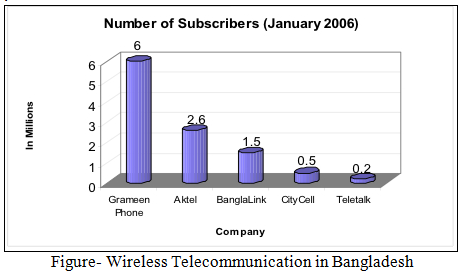
The mobile phone industry in Bangladesh is growing rapidly, and is making a significant contribution to economic development and employment generation. The number of mobile subscribers increased to 11 million in 2006, from 3.85 million in 2004, registering an impressive growth of 186%. Consequently, the country’s mobile telecom density went up to 6.7% from 2.75% during these few years. Among the five companies that are currently operating, Grameen Phone (in partnership with Telenor of Norway), which has the highest market share, more than doubled its customer base to over 6 million during this period. Other companies, which include Aktel, Banglalink, CityCell, and Teletalk, also experienced robust growth in terms of number of subscribers and customer revenue. A sixth operator, Warid Telecom, is preparing to enter the market after obtaining an operating license in December 2005.
Cell Phones
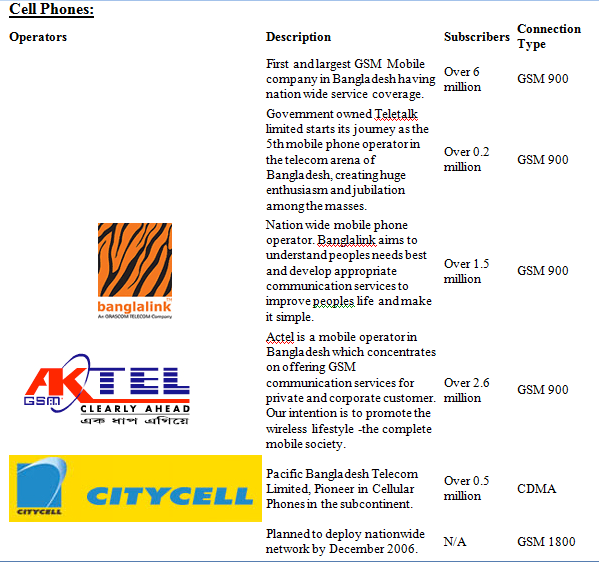
Wireless LAN & Internet:
GrameenPhone, the largest mobile phone company in Bangladesh, pioneered a successful project to bring mobile phones to the country’s villages and is now moving on to providing Internet access. After a successful pilot project, the company decided this month to set up 500 Internet access points, which it is calling community information centers, across Bangladesh by year-end
The announcement came a week after the Nobel Peace Prize was awarded to Grameen Bank, the parent company of one of GrameenPhone’s two corporate owners. The other is Telenor, the Norwegian telecommunications company.
The centers will be run by local entrepreneurs who will either invest their own money or be given access to small loans to cover set-up costs, which GrameenPhone estimates will be $800 to $1,400. The centers will be positioned to serve 15 villages and about 40,000 people and will have a computer, a Web cam, a printer, a scanner and other basic equipment. The Internet access will come by way of a connection to GrameenPhone’s GSM mobile phone network, which can download data at about 128 kilobits per second, not quite broadband but faster than a dial-up connection.
Conclusion:
The role of communication in the economic development of Bangladesh, which is to be communicated, how and why-are key question in communication. In disseminating the message, selection of appropriate media is as important as language. Wrong selection of media and inadequate and improper communication supports lead to failure in development.
Reference/Bibliography
(1) Lecture of our honorable respected course teacher.
(2) Basic Business Communication.
– Raymaond V. Lesiker, ph.D.
EMERITUS, LOUISIANA STATE UNIVERSITY.
– Maric E. Flatley, ph.D
